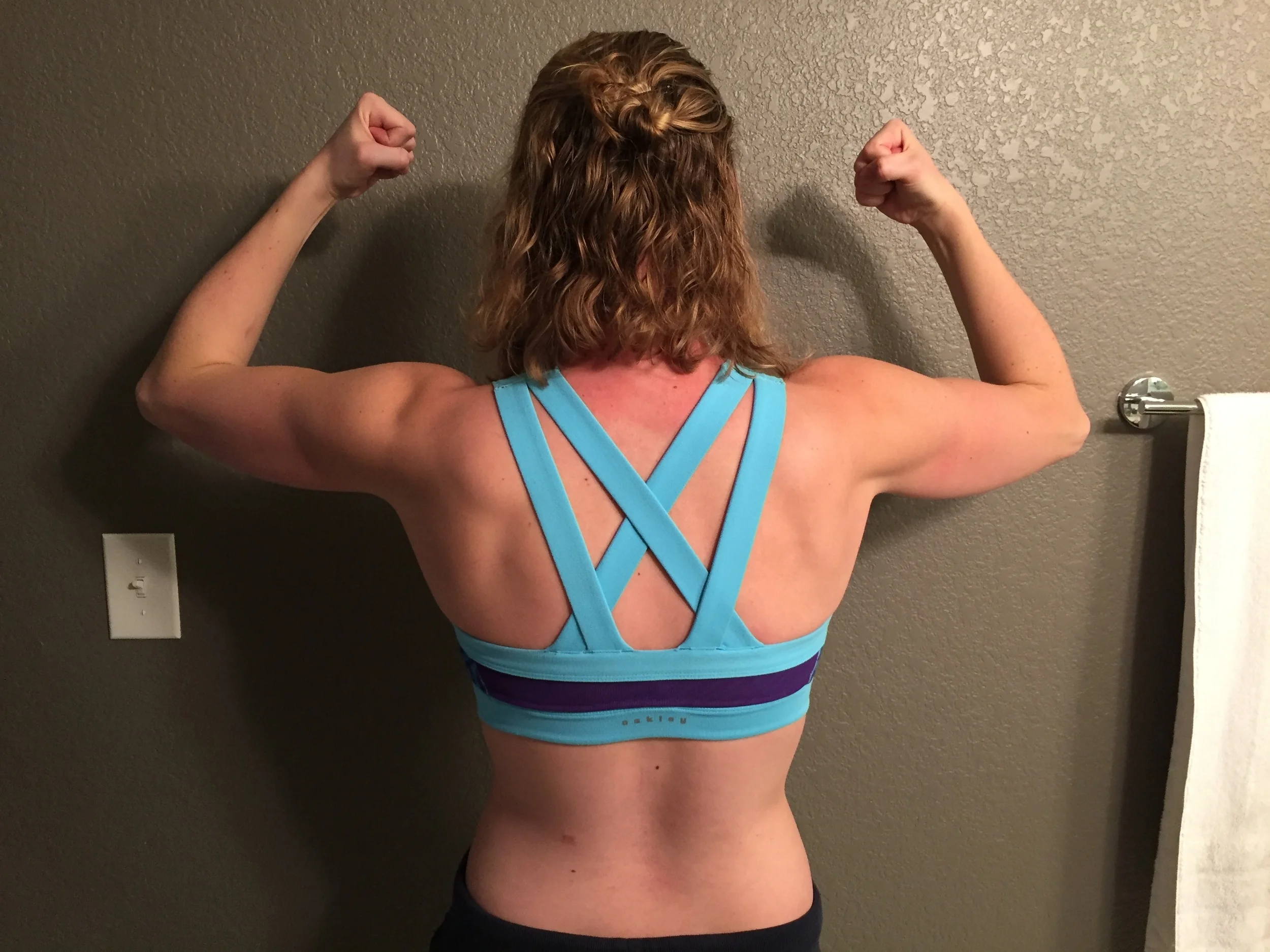Training for Life: Exercises to consider
Before I get into today's post, I want to first give a shout out to one of my distance clients who has been absolutely killing it. I won't disclose any names, but she asked me last week if I was interested in progress pictures, and when I said yes, this is what I received, along with an appropriate caption:
"Look! I have shoulders!"
Indeed she does. And she's developed those shoulders by focusing on improvements in basic movements like chin ups and push ups. It's also worth mentioning that if you met her in person, she would not look big or bulky. But she would look as fit and strong as she is.
A few weeks ago I started with a new series on the blog where I will feature exercises that do two things: get you stopped by strangers in a gym, and hopefully, improve your overall approach to training.
One-Arm Offset Dumbbell Step Ups
This exercise was in the very first program that was written for me in 2011. I was sure to send along a profanity-laced email to my coach immediately after performing them....
Kidding. But this was an exercise that highlighted my weaknesses and I was glad to be on the other side of them.
Single-leg variations can help improve core stability and also work on imbalances within your legs.
What does it do?
This exercise demands core stability by placing a higher demand on core function. In other words, the side without the weight is working to stay parallel to side with the weight. While it might not seem like much at first, this off-set loading of the weight, is forcing your core to work double-time
Note: Off-set loading means putting a higher load on one side of the body than the other. A progression of this exercise could include off-set loading by using a 15 lb dumbbell on one side and 20 lb dumbbell on the other.
This exercise also works imbalances that exist on different sides of the body. For example, most everyone I've met has one leg that's more stable than the other, and single leg work provides an opportunity to work on those imbalances.
Coaching cues
Drive through the heel of the working leg (the leg on the step) leaning forward slightly and lifting the heel of your non-working leg off of the ground. Once at the top of the step, land the non-working leg lightly on the step. Pay attention to the knee of your working leg, as many folks will have a tendency to cave in or move from side to side throughout the movement. Think of the knee staying over the middle of the toe during the movement.
The shorter the box, the heavier the weight you can use. The taller the box, the lighter the weight.
Perform six to eight reps on one leg, and then repeat on the other leg.

